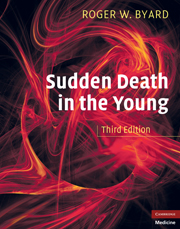Book contents
- Frontmatter
- Contents
- Preface to the third edition
- Reviews of the first and second editions
- Acknowledgments
- Section 1 Introduction
- Section 2 Unintentional trauma
- Section 3 International trauma
- Section 4 Natural disease
- 4 Infectious conditions
- 5 Cardiac conditions
- 6 Vascular conditions
- 7 Respiratory conditions
- 8 Neurological conditions
- 9 Hematological conditions
- 10 Gastrointestinal and genitourinary conditions
- 11 Metabolic and endocrine conditions
- 12 Miscellaneous conditions
- Section 5 Maternal, fetal, and neonatal conditions
- Section 6 Sudden infant death syndrome
- Appendices
- Index
10 - Gastrointestinal and genitourinary conditions
from Section 4 - Natural disease
Published online by Cambridge University Press: 05 January 2013
- Frontmatter
- Contents
- Preface to the third edition
- Reviews of the first and second editions
- Acknowledgments
- Section 1 Introduction
- Section 2 Unintentional trauma
- Section 3 International trauma
- Section 4 Natural disease
- 4 Infectious conditions
- 5 Cardiac conditions
- 6 Vascular conditions
- 7 Respiratory conditions
- 8 Neurological conditions
- 9 Hematological conditions
- 10 Gastrointestinal and genitourinary conditions
- 11 Metabolic and endocrine conditions
- 12 Miscellaneous conditions
- Section 5 Maternal, fetal, and neonatal conditions
- Section 6 Sudden infant death syndrome
- Appendices
- Index
Summary
Gastrointestinal conditions
Introduction
Gastrointestinal causes of sudden and unexpected death in the young, such as intussusception, volvulus, and small-intestinal obstruction, are uncommon (Table 10.1). As the clinical presentation of these disorders may be non-specific, the diagnosis may not have been established prior to autopsy; however, the cause of death usually becomes obvious once the peritoneal cavity has been opened. Delay in diagnosis may be a particular problem in intellectually impaired individuals.
Gastroenteritis
Gastroenteritis resulting in dehydration and electrolyte imbalance may cause sudden death, particularly in early life. The causative agents are often viral infections, and the effects of fluid depletion may be exacerbated by hot weather and parental inattention. Further discussion on the role of gastroenteritis in sudden death may be found in Chapter 4.
Intestinal obstruction
Acute intestinal obstruction in children may be caused by intussusception or volvulus, with rare lethal episodes resulting from electrolyte imbalance and intestinal perforation with sepsis. Obstruction may also be caused by incarceration of external or internal hernias with resultant infarction (Figure 10.1). As obstruction causes a characteristic clinical picture of colicky abdominal pain and vomiting over some time it is usually not considered a cause of unexpected death; however, occasional cases of bowel obstruction presenting in a fulminant manner have been reported. In addition, cases are occasionally encountered in which either delay by parents in seeking treatment or the provision of inadequate medical treatment has resulted in early death.
- Type
- Chapter
- Information
- Sudden Death in the Young , pp. 440 - 462Publisher: Cambridge University PressPrint publication year: 2010
- 1
- Cited by



